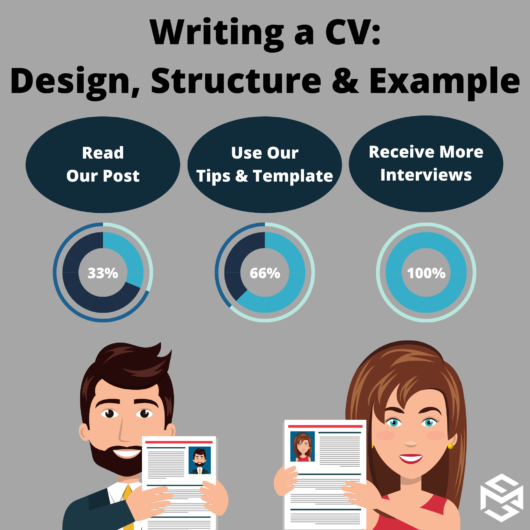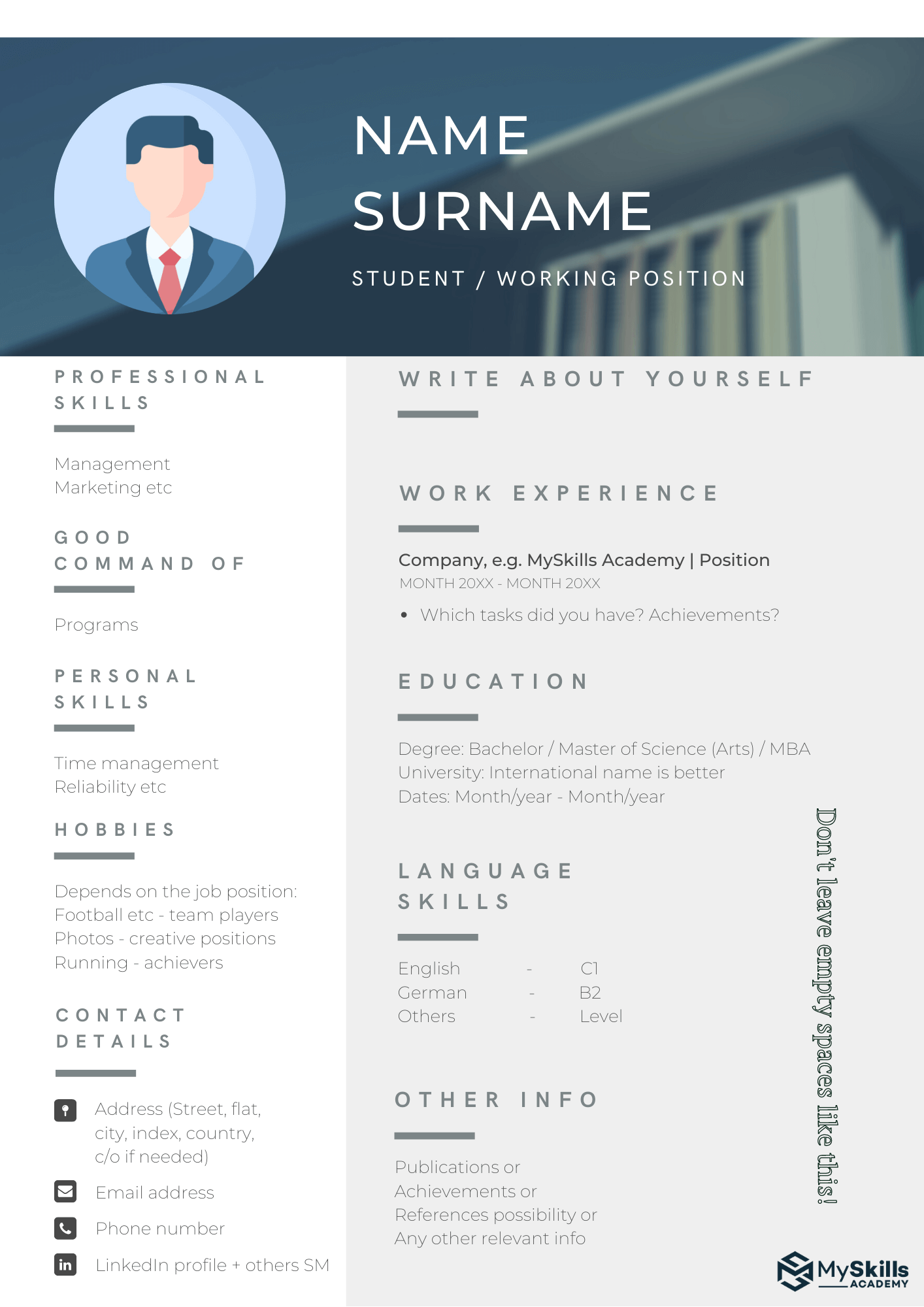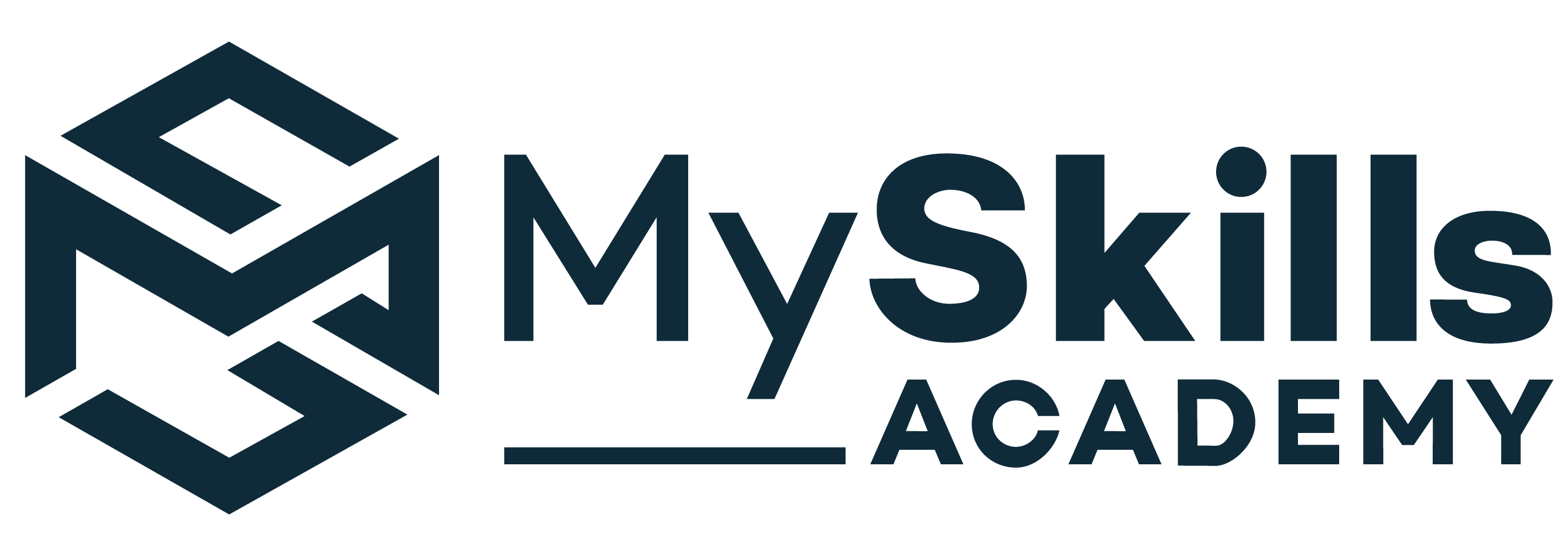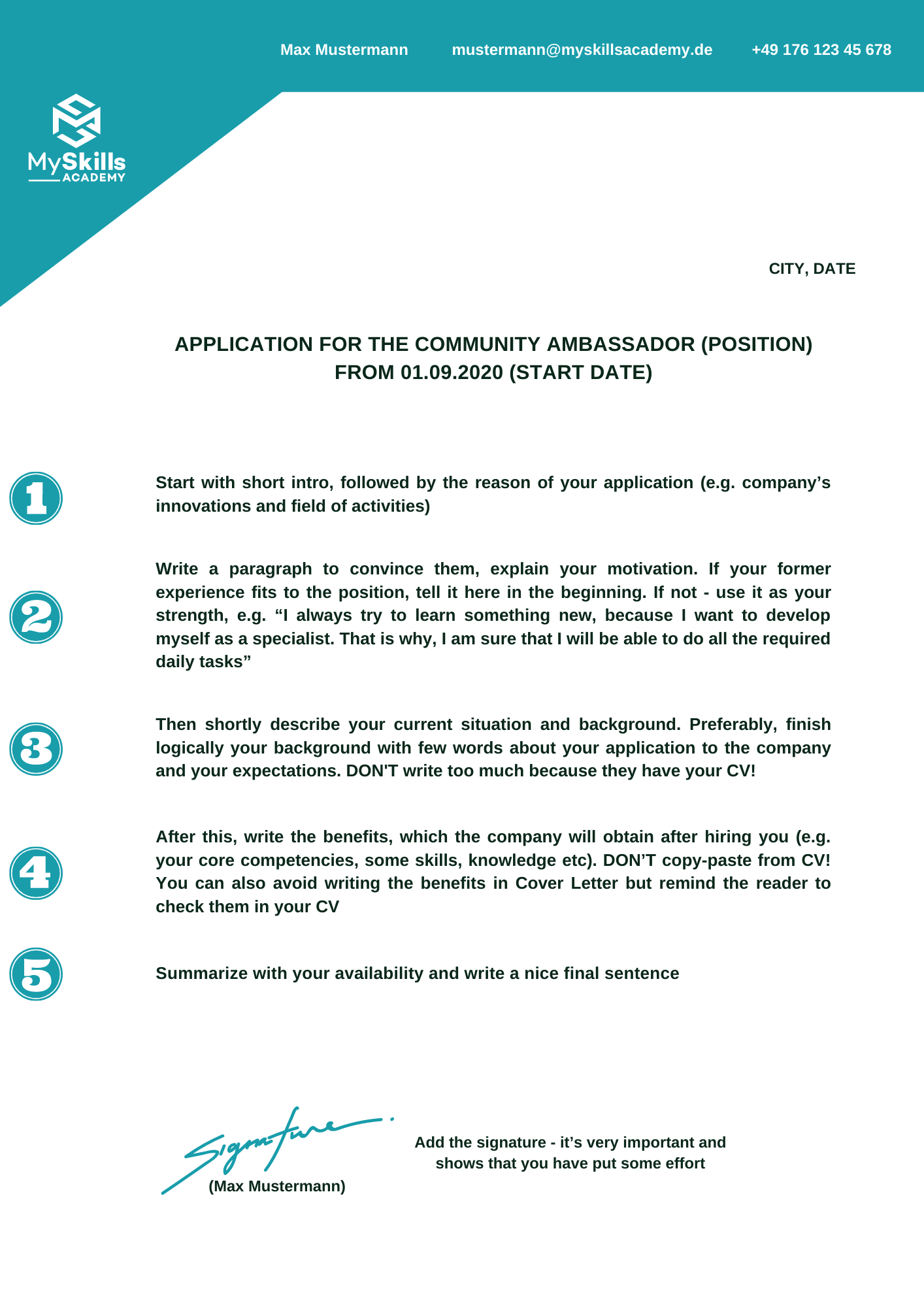
What is Curriculum Vitae or Resume?
Curriculum Vitae, or in short CV, is probably the only document, which is required by almost all companies across the world and industries, when you are applying for a job. In this Blog Post, we will explain the importance of CV in Germany (German companies often use the word “Lebenslauf”), describing the structure of a good Curriculum Vitae while providing our own CV example, which we recommend to use, especially if your application is for the German job market.
First at all, remember that Curriculum Vitae, CV and Resume are synonyms for the same final product. As we have written before, Germans also use the word “Lebenslauf”. That’s why it is important to highlight that you should carefully read the list of required documents before you hand in your application. Thus, if the company requests a “Lebenslauf”, don’t name your file “CV” – your application process could end faster than you except.
What to Include in Your CV
You can easily find a CV example on the Internet, but the annoying thing is that all the various examples will be different. Thereby, the logical question should pop up in your mind: “Which CV example should I use?”. Our answer won’t surprise you: it depends on many factors.
Let’s start with the design, focusing on CV in Germany. The application process differs from company to company and from industry to industry. There are no strict standards of CV in Germany but having a professional photo in the header is a “must have”, compared to the USA for example, where many companies dislike seeing photos in the CV due to possible legal issues. Thus, many Germans are paying a significant amount of money for a series of professional head shots, which they can use for different variations of Curriculum Vitae.
Still, remember one general rule: if your application is for a creative position (e.g. Marketing, Design, Business Development) better apply a cool design for your Resume. If your application is for a more structured position (e.g. Finances, Banking), better use a discreet design for your CV.
We will focus more in depth on the structure and content of Resume later on and you will be able check our CV example at the end of this post. However, just remember to include the following information in your application: A section including your general personal information, working background, educational background, language skills, professional skills and extracurricular interest. To better understand how to structure all these aspects within your Curriculum Vitae, read the next section and check out our CV example below.
CV Example: Structure and Design of CV in Germany
MySkills Academy wants to share with you useful tips about the structure of a CV in Germany, as well as pointing out the required information which your potential employer will definitely want to see included. Moreover, we have created a CV example, which might help you to design your own future Resume and proceed further with your application. So, here we go:
1. Try to make your CV unique! Even if you are using templates, there are many options to edit the content which will impress the HR-team. Moreover, black and white Curriculum Vitae are kind of boring and will probably not be noticed even if you are a perfect fit for this position. If the general appeal of your CV differs from the standardized applications of other candidates, you will receive a competitive advantage. Your Resume should not be over-designed – be consistent and follow maximum 2-3 colours and 2 fonts. Check our CV example below and you will understand what we mean 🙂
2. Always write a short intro about you on the top of the CV. To make a positive impression, we advise you to create 1 long sentence with advanced grammar (approx. 4 rows). Including a business head shot as well as an “About” section is a typical beginning of a CV in Germany.
3. Put the most relevant information on the top of your CV. Work experience shall prevail almost in all cases. Same order is applicable also for your skills. Professional knowledge and software skills are more important than personal characteristics (check our CV example below to have a better understanding of a good structure for CV in Germany).
4. If you speak a high level of the required working language, put it always at the beginning of the “Language Skills” section in your Resume.
5. Think twice before adding your hobbies to your Resume, since they can be used to make presumptions about your personality. Check the CV example below with precise explanations, how different hobbies can be interpreted by the HR Department.
6. Add contact details and your Social Media accounts to increase the trustworthiness of your Curriculum Vitae.
7. The other information is up to you and depends on the company and position, to which you will be sending your application.
8. We DON’T recommend creating more than a 2-page CV in Germany – nobody will read it. Submit it only as PDF, if the company does not require another format.
You can always use free websites to create your Resume: Canva (for creative designs, our CV example was created there) and Europass (if you need a standardized CV form).
Last Words About Application Process
We hope that you will benefit from our tips! By the way, you don’t need a CV to find a job with MySkills Academy😉! If interested – fill out our 1-minute application form. Like MySkills Academy in order to stay up to date about future posts!
Do you like our tips? Follow our updates in Facebook ![]()

Continue reading about Structure of the Cover Letter

